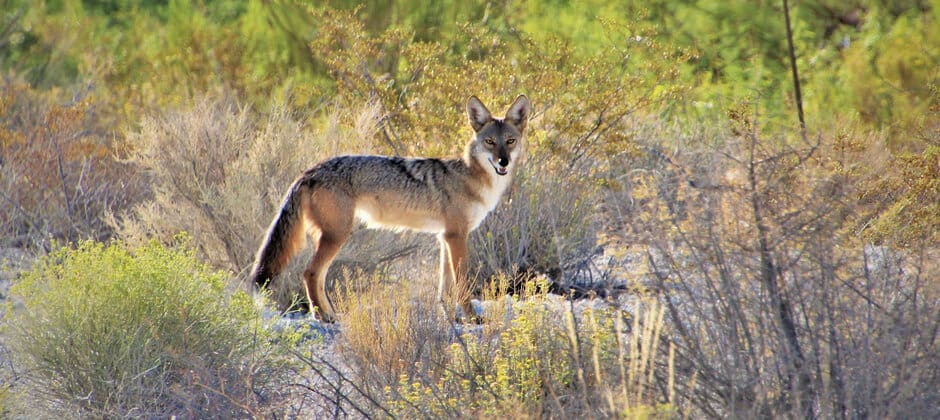Share this article
Suburban coyotes, foxes favor wild prey over pets and trash
Despite their reputation for digging into trashcans and getting into altercations with humans, coyotes in suburban New York are actually eating more natural food sources like white-tailed deer and rodents. Red foxes, the other carnivore in the area, seem to be doing the same.
“Predators play an outsized role in ecosystems in driving population dynamics for other species,” said Michaela Peterson, a PhD candidate at Vanderbilt University. “Even smaller predators like foxes and coyotes in urban ecosystems play a really major role because there aren’t apex predators like wolves.”
Peterson wondered about these two species’ diets and how they could impact ecosystem dynamics, especially since coyotes are known to eat trash, attack small pets and come into conflict with humans in urban areas.
Peterson, who was a master’s student at Pace University at the time of the research, led a study under the supervision of Melissa Grigione, a professor at Pace University’s Department of Biology and Health Science, published in Urban Ecosystems studying red fox (Vulpes vulpes) and coyote (Canis latrans) scat to learn more about their diets to inform management.
The first step was finding the scat. The team collected scats from 2017 to 2018 for coyotes in Rockefeller State Park Preserve in Westchester and 2011 to 2012 for red foxes in Fire Island. “Conveniently enough, carnivores are actually likely to use hiking trails within state parks,” she said. “You’re most likely to find scats along these areas.”
Michaela and her colleagues went out several times a week during the study period, walking trails for scats, which she was able to identify based on their size and shape. Seeing prey remains inside the scat also told her that the droppings weren’t from domestic dogs.
To confirm the prey species the scats belonged to in the lab, Peterson and her colleagues dissolved the digestive material from the scat in a solution. They were left with hair, bones and other bits.
“Hair ended up being the most useful item for identifying [prey] species,” she said, adding that bone fragments are often too small to identify easily. Microscopic analysis revealed hair structure, which the researchers compared with known samples collected from nearby museums to identify species.
Some scat contents were a bit surprising. For example, Peterson came across a full chicken foot that appeared to be eaten whole in a coyote scat. They also found bits of fabric and plastics.
But surprisingly, anthropogenic food sources didn’t make up as much of coyotes’ diets as they anticipated. In fact, only nearly 12% of coyote scat had anthropogenic waste in it. “It was pretty negligible,” she said. “It’s exciting to see these species aren’t relying on anthropogenic food sources, and their diets are not artificially subsidized by that.”
Instead, the coyotes in Rockefeller State Park Preserve were mostly eating white-tailed deer (Odocoileus virginianus), which was found in about 54% of the samples. Rodents such as field mice and voles were found in about 17% of the coyote scats. Peterson suspects that most of the white-tailed deer the coyotes consumed was roadkill.
Red foxes’ diets were mostly made up of birds, the team found, followed by the same types of rodents coyotes were eating. Peterson thinks that birds made up much of the foxes’ diets because previous research shows that fox populations closer to the coastline consume more birds. The team was also happy to discover that the foxes weren’t consuming piping plovers (Charadrius melodus), an endangered species that shows up in the study area, but are protected by nest exclosures. “That shows that has been an effective strategy for keeping plovers away from nests,” she said.
For both species, they didn’t find any seasonal changes in their diets.
Overall, Peterson said the findings can be reassuring to suburban residents who might have been worried about the effects coyotes were having in these areas. This study suggests they aren’t coming into as much contact with pets and garbage cans.
“It really shows as long as there are natural areas, such as this state park, as long as everything’s not completely developed, they don’t want to interact with humans as much as they are focused on natural prey items,” she said.
Header Image: Coyotes in a New York state park consumed mostly white-tailed deer and rodents. Credit: Renee Grayson








